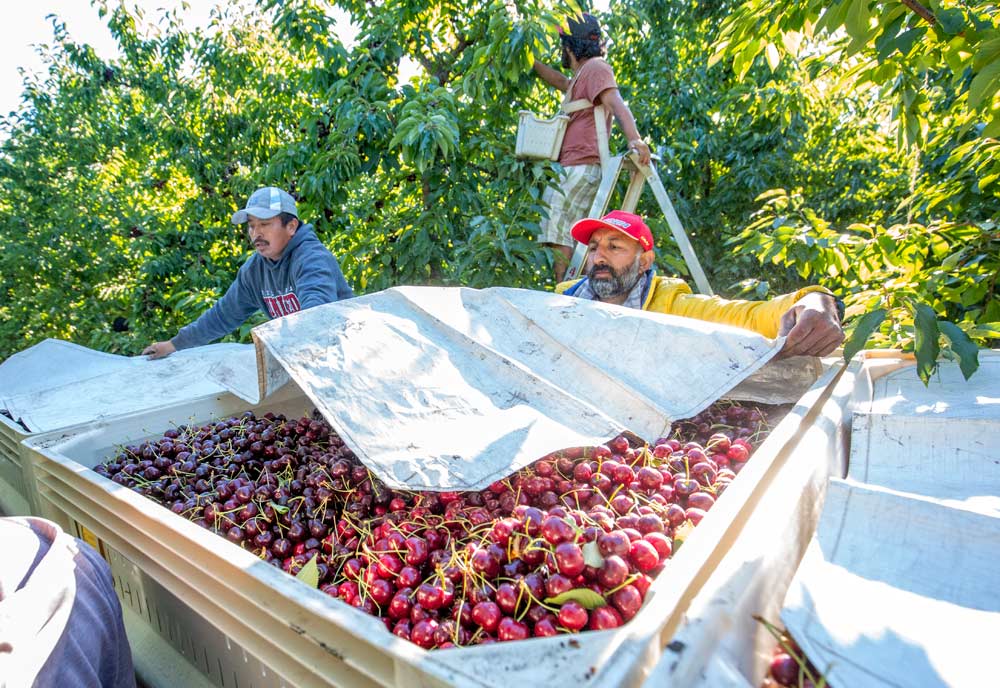
Harwinder Singh, right, tosses a Bushpro Mylar cover over Skeena cherries at Sukhpaul Bal’s Hillcrest Farms in Kelowna, British Columbia, in July. The covers, originally designed for Canada’s forestry industry, have become a staple for cherry growers to keep their fruit cool and humid when trucked to the packer. (TJ Mullinax/Good Fruit Grower)
It’s sill early in Sukhpaul Bal’s cherry block in his Kelowna, British Columbia, cherry orchard, but the sun is starting to creep above the canopy of the Skeena rows.
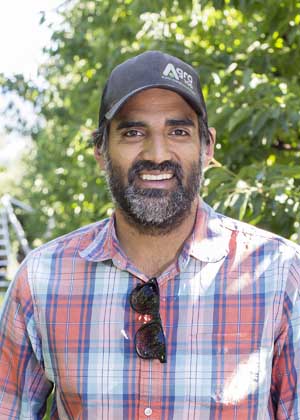
Sukhpaul Bal
That’s when his crews run and grab the Mylar covers and spread them over freshly picked fruit.
“The cherries, they’ve lost their moisture source from the tree,” he said. “Now, once they’re picked, what I say is the cherry is on its own. The clock is ticking.”
Keep cool is the motto in cherry orchards, where heat rapidly degrades picked fruit and turns stems brown. That’s why nearly all B.C. cherry growers use Mylar covers. White on the outside, reflective on the inside, the tarps keep heat out and humidity in.
A Canadian forestry products company developed the tarps and a researcher at the Agri-Food Canada Summerland Research and Development Centre adapted them to tree fruit somewhat by accident.
“Serendipity is the biggest force in research,” said Peter Toivonen, a postharvest physiology research scientist.
Toivonen first saw the tarps in the 1990s while helping his sons on a Boy Scout tree planting trip, noticing the organizers used white tarps to protect the seedlings. Turns out the forestry industry had been using them for 30 or 40 years to keep trees cool and humid working in areas far away from refrigeration. He experimented with herbs and vegetables for a few years.
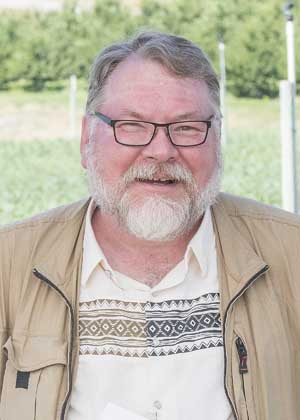
Peter Toivonen
In 1995, he transferred to Summerland and was told the cherry industry was having trouble with stem browning. He brought some of the tarp material with him and one day near Osoyoos, he pulled a few out to keep cherries cool until a refrigerated truck arrived. “I didn’t know what to do so I brought these tarps, and lo and behold they worked,” he said.
He then began introducing them to growers, and now several packing sheds require them. Among them: BC Tree Fruits, which represents about one-third of the cherry volume in British Columbia.
“We have changed our rules this year,” said Hank Markgraf, horticulturist for BC Tree Fruits, a Kelowna-based packing house cooperative. “Our premium and export growers must use Mylar tarps.”
Growers also have shown interest in Chile and Europe, but Toivonen doesn’t know their adoption rate.
His research has shown that white material reflects sunlight better than the Mylar and that only the tops need to be covered. Draping them over the sides doesn’t add much protection.
“And they’re cheap,” he said. “They cost about $15 bucks for one to cover a bin, and they last about five years under heavy use.”
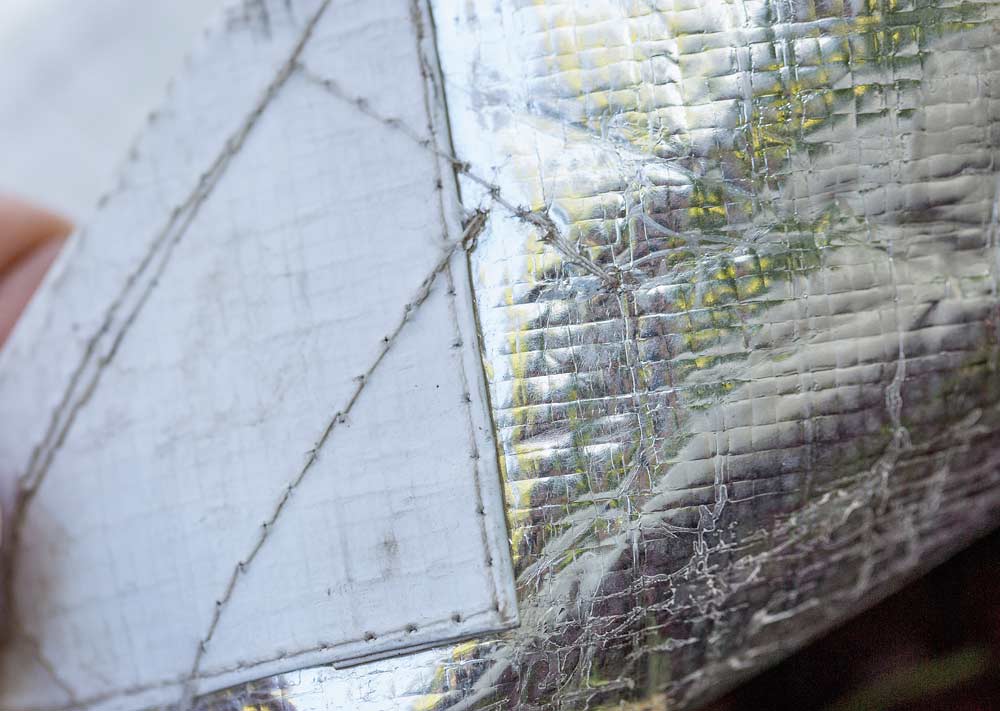
The Mylar and white weave of a Bushpro cover used by many cherry growers. Research has shown that white reflects more heat than Mylar so the white side is out. (TJ Mullinax/Good Fruit Grower)
Some growers have asked the manufacturer, Bushpro Supplies Inc. of Vernon, British Columbia, to custom make the tarps with Velcro straps, grommets and larger sizes.
Like many growers, Bal stretches them over the entirety of his flatbed truck that hauls from the orchard to the packing house. The individual bin-sized tarps blow off in the wind on the road.
He calls them intuitive. And the price is small when it comes to making sure cherries are ready for premium prices. He considers it the final step in filling a bin and won’t let his cherries go without it.
“Cherry growing is attention to detail,” he said. “What makes the premium cherry grower, that person going for those premium markets? It’s that attention to detail.” •
—by Ross Courtney
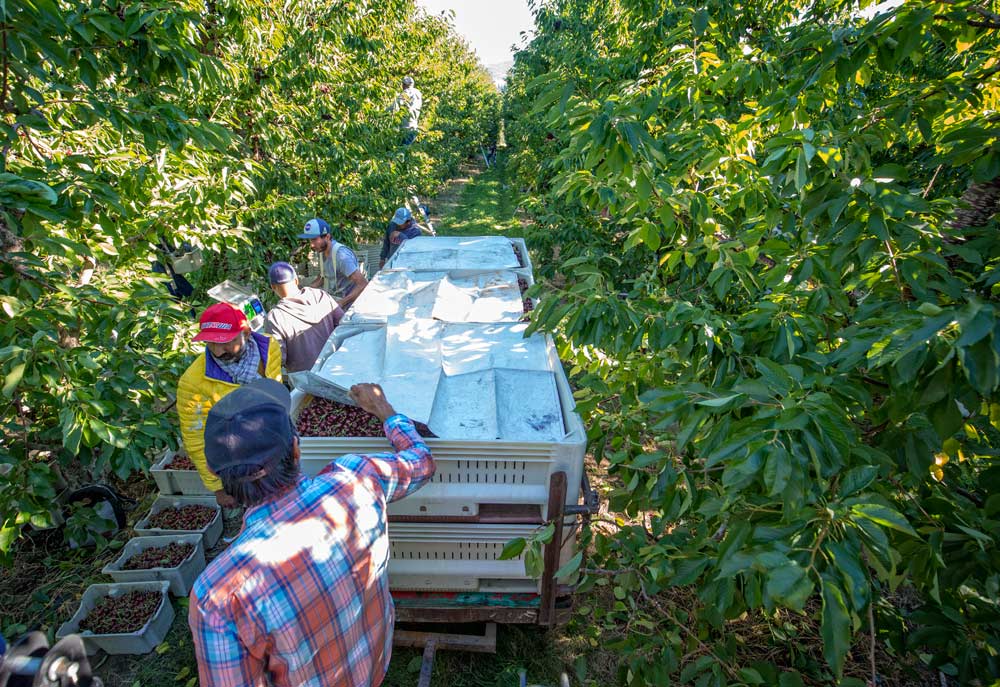
Sukhpaul Bal, bottom, inspects Skeena cherries before they are pulled out of the orchard in Kelowna, British Columbia, on July 21, 2018. (TJ Mullinax/Good Fruit Grower)






Ross
We have manufactured and sold these in Washington for 15-20 years and have several versions.
Steve Kuhn
Wilson Orchard and Vineyard Supply